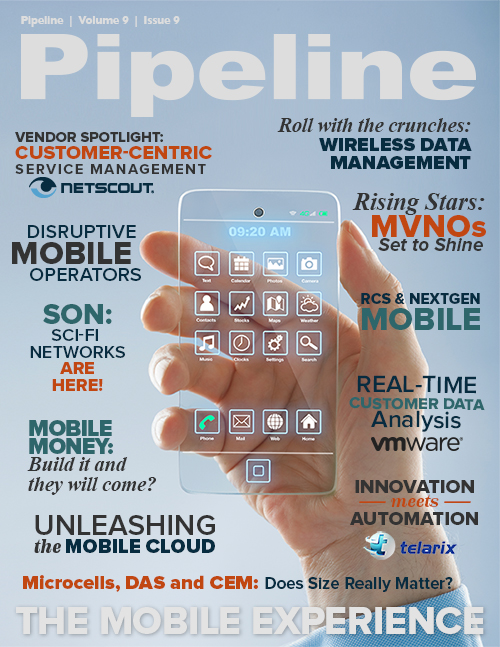SON: Sci-Fi Networks Are Here
By: Becky Bracken

Twenty years ago, if a friend had told you that one day a computer would be able to update itself without any help from a human being, you might’ve made a ham-handed “HAL 9000” joke or called
your friend’s prediction a crazy science-fiction fantasy.
Well, now it’s 2013, and self-organizing networks, or SON, are just like HAL from 2001: A Space Odyssey, only without the big-screen personality. SON is the realization of an automated network
constantly improving its configuration in real time. It can sense when a cell tower is becoming congested, weak or is no longer available and redirect traffic to a nearby available cell site.
SON is, in essence, “self-healing,” which again sounds a bit like science fiction, but whether that means engaging redundant hardware systems or rerouting traffic around problematic network
elements, SON is largely self-reliant.
It’s of particular interest to operators rolling out LTE across their network footprints. Automated SON allows LTE network upgrades to be made slowly, and for configuration to happen on the fly
or after the networks are operational, because SON can continuously improve configuration in real time after a network is established. It’s proven to be a delightful surprise for operators
struggling to manage their LTE networks, but the deployment of SON has reaped unintended benefits on the legacy side too.
“While SON is up and running in a few LTE networks around the world, we were surprised to find that some of the large incumbents we surveyed for our SON and optimization study have deployed SON
as the key optimization tool in their 3G networks as well,” says Stéphane Téral, principal analyst for mobile infrastructure and carrier economics at Infonetics Research. “Since SON was
originally developed for LTE, this finding is fascinating and draws to a close the debate over whether SON could be used in legacy networks.”
But when asked whether its application to 3G networks was unforeseen by SON vendors, the answer was quite different.
“Not at all,” says Riina Luoma, senior marketing manager for Nokia Siemens Networks. “The underlying principles of SON automation speeding up processes and rollouts, balancing traffic loads,
optimizing adjacencies, self-managing the networks, and real-time optimization of network settings apply equally to all technologies. There [are] no priority rights for SON automation reserved
for LTE only. Many SON automation features like load balancers and self-healing functions bring greatest benefits to mature and often overcrowded networks like 3G.” Nokia Siemens has placed
equal focus on SON automation for 3G and LTE networks, and the supplied SON base reflects the importance of both, Luoma says.





















